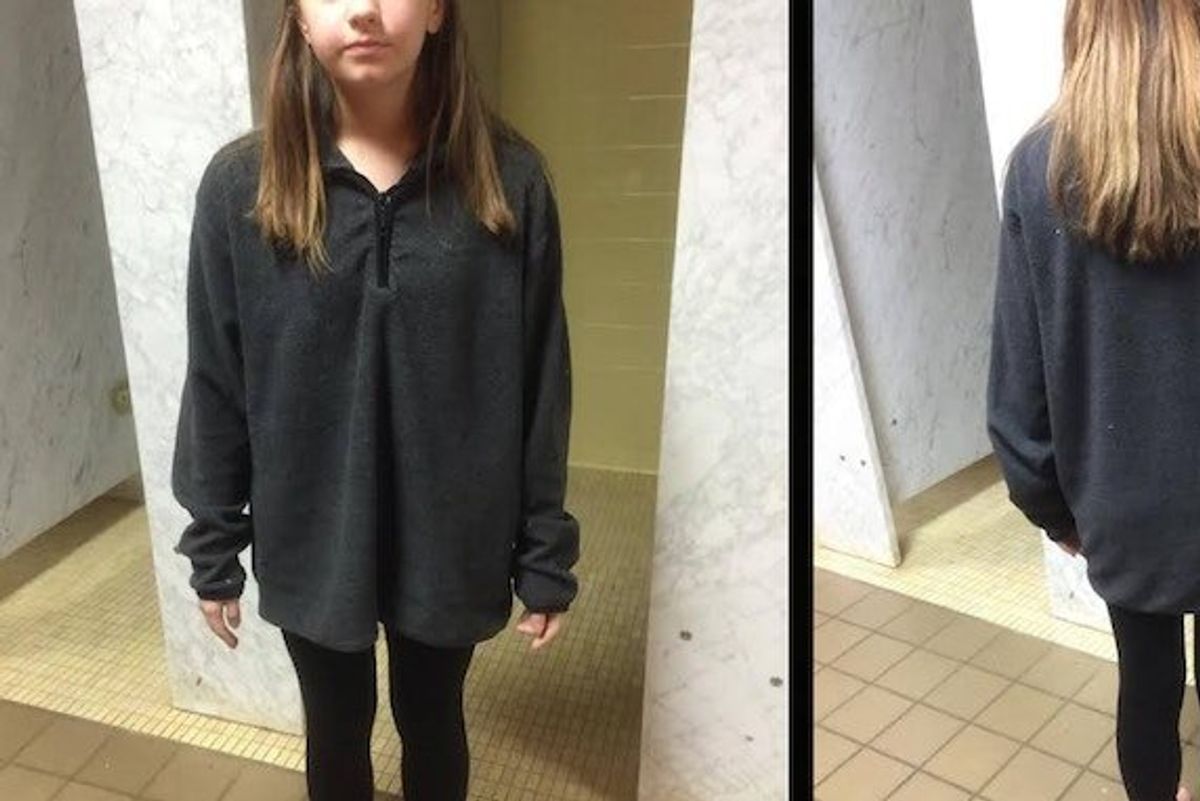Tired of being humiliated, these girls fought the sexist school dress code. And won.
"In a way, you're telling [a girl] that boys are more entitled to their education than she is."

Four middle-schoolers sat at the podium. Poised. Confident. Ready to challenge the Portland Public Schools board on its dress code.

AnaLuiza, a seventh-grader, told a story of a friend who was pulled aside one day for wearing a skirt deemed to be too short.
The friend sat in the principal's office for hours while the staff tried to get ahold of her parents. She missed important classwork, and worse yet, felt humiliated by the ordeal.
"The only reason I go to school is to get my education," AnaLuiza told the board. "When I get dressed in the morning, my intention is not to provoke or be sexualized. My intention is to feel comfortable in my own skin."
Sophia, also in seventh grade at the time, spoke last.
"My problem with the dress code is that 100% of the students that get sent home are female. ... In a way, you're telling [a girl] that boys are more entitled to their education than she is. And I don't think that's acceptable."
They were absolutely right. Because if you're a preteen or teenage girl in America, you can get a dress code violation for almost anything: showing your midriff, shoulder, collarbone, leg, bra strap, or, in some cases, for just wearing something as harmless as spaghetti straps.

Girls who violate their schools' dress codes are accused of being distractions and are often humiliated in front of their classmates.
They're then either sent home to change (missing valuable class time) or forced to cover up with "shame clothes," like old sweatpants that have been lying around the guidance counselor's office for who knows how long.
This has been a problem for years, and a particularly frustrating one to solve. Almost everyone agrees schools need some kind of dress code, but almost no one can agree on what that should look like.

But now, thanks to these brave Portland students and a couple of key community members, we might finally be making some progress.
The school board, to the surprise of many, agreed the dress code needed fixing. But that didn't mean it would be easy.
A committee was formed, including Sophia (one of the girls who testified in front of the board), parents, teachers, and other community leaders. Lisa Frack, president of the Oregon chapter of the National Organization of Women, and a parent, was one of them.
Frack said some issues were easy to fix, like the ban on spaghetti straps. That was quick to go. Others? Not so much.
There was plenty of back-and-forth. Are short shorts OK? How about cleavage? What about all of the subtle (and not-so-subtle) policies that unfairly target students of color?

Then there was the issue of enforcement. Although hopefully, with the new dress code, there would be fewer violations, the committee wanted to find ways to eliminate shaming and missed class time for students who broke the rules.
Despite debate on some of these specific issues, Frack said, the conversation always came back to the same basic point.
Some board members "felt like they wanted a little line in there reminding everyone that this is a learning institution. But that's exactly what we're trying to get away from," Frack said.
"We don't want to link clothing and learning. ... You can't learn math better or worse whether you have a tie on or a collared shirt or a tank top."
"We're going to basically have people covering what you have to do to not be naked."
The final approved dress code, one of only a few like it in the U.S., was a major improvement. But perhaps just as important was the conversation sparked by the process.
Gone was phrasing that specifically targeted bare midriffs, "plunging necklines," or "sexually suggestive clothing." The new, gender-neutral code essentially asks that students wear a top and a bottom (or a dress), and that their clothes not show profanity or reference drugs.
It's pretty simple. But the conversations that led to this point were anything but.
"It raised the issue of people's discomfort with how girls are objectified in this country. Is it a solution to tell them to cover up?" Frack said. She even recalled some of the adult members of the advisory committee having trouble talking about things like breasts and sexuality with a straight face — which, she said, is part of the problem.
For now, though, Frack just hopes this code can serve as a model to other districts looking to get with the times. Portland just rolled out the new policy in the fall of 2016, so it remains to be seen how it'll fare — especially when the weather gets hot again.
But so far, Frack said, all she's heard from parents is how happy their kids are to be free to be themselves without judgment.
This article originally appeared on 9.1.16

